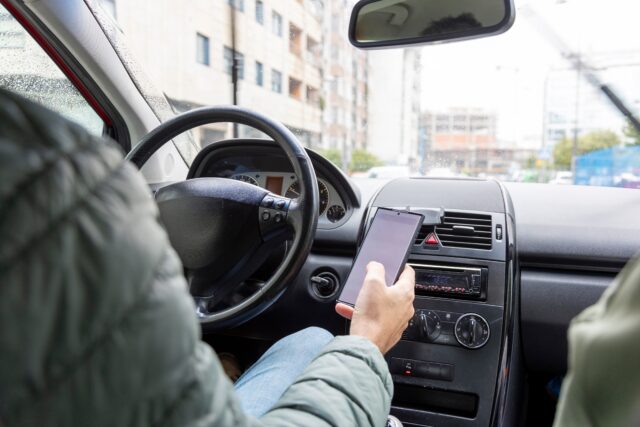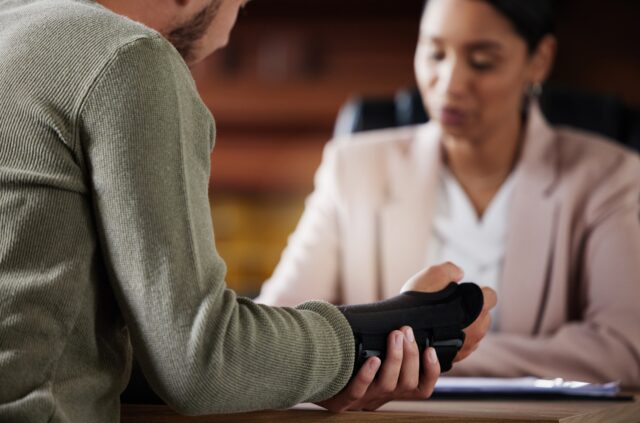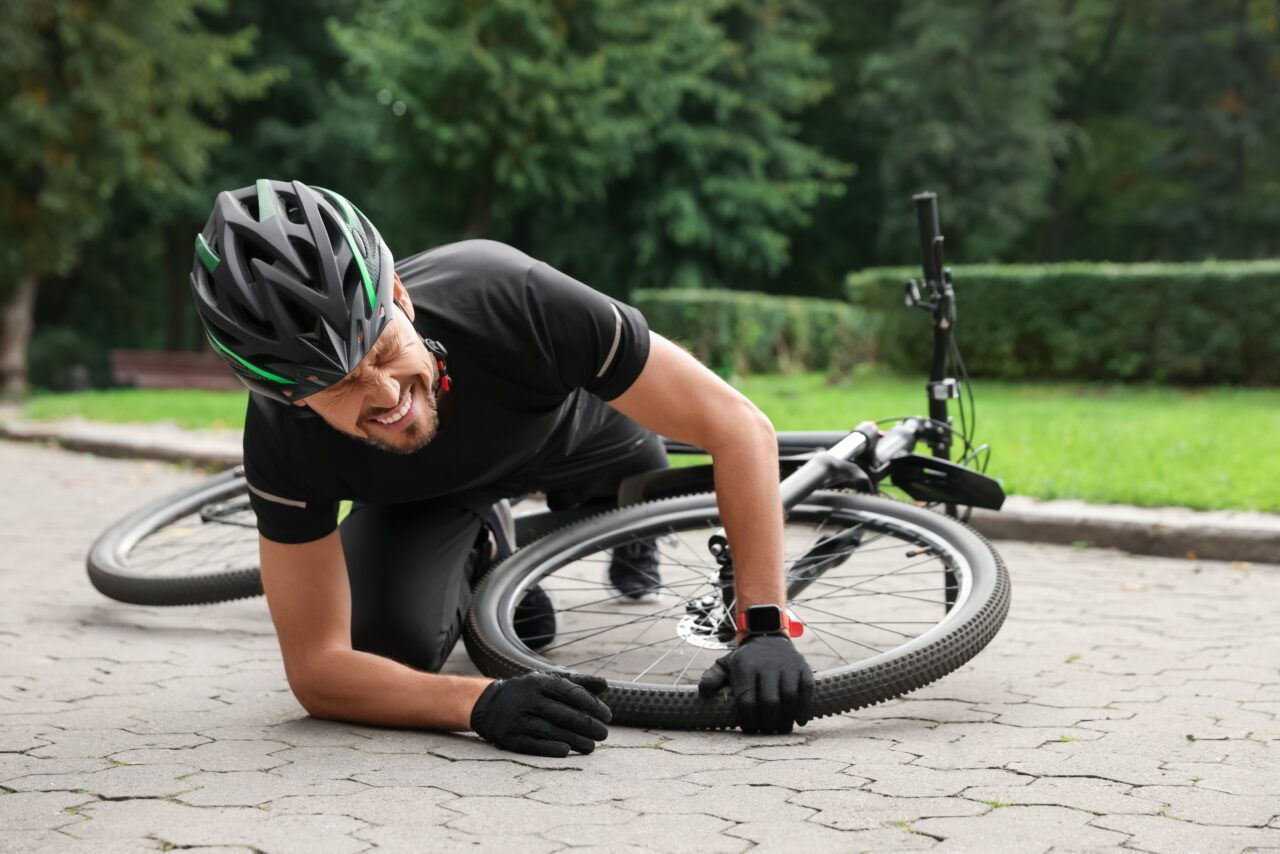A no-contact bicycle accident occurs when a negligent driver causes a cyclist to crash without physically hitting them. This type of accident can happen when a driver swerves too close, cuts off the cyclist, speeds, or behaves aggressively, forcing the cyclist to take evasive action like swerving or braking suddenly. Though the driver does not make contact, their actions still create a dangerous situation.
A skilled Jonesboro bicycle accident lawyer can help by investigating your accident circumstances, gathering evidence, and proving that the driver’s negligence led to your injuries. They can also negotiate with insurance companies and fight for fair compensation to cover medical expenses, lost earnings, pain and suffering, and other damages the accident caused.
How Do Negligent Drivers Cause No-Contact Bicycle Accidents?
Negligent drivers can cause no-contact bicycle accidents in several ways, often without directly hitting the cyclist. These accidents occur when a driver’s actions create a dangerous situation that leads to a crash, even if the bicycle and vehicle never physically collide.
One common way negligent drivers cause no-contact accidents is by cutting off cyclists. When a driver turns or changes lanes without checking their blind spots, they can force a cyclist to abruptly swerve or brake. This sudden movement can cause cyclists to lose control, crash, or even fall into traffic. The driver may not realize the danger they caused, as the vehicle never actually touches the bike.
Another situation arises when a driver speeds too close to a cyclist, often called “buzzing.” This aggressive behavior can startle cyclists, causing them to veer off the road or lose their balance. Even though the vehicle does not make contact, the driver’s failure to give enough space creates a hazardous situation where the cyclist is at risk of falling or colliding with another vehicle or obstacle.
In some cases, drivers may run stop signs or red lights, creating dangerous situations for cyclists with the right of way. Even if the driver never hits the cyclist, running a light or stop sign can force the cyclist to take evasive action to avoid a crash. This sudden maneuver can lead to a fall, injury, or collision with other traffic.
Driver distractions, such as texting, talking on the phone, or using GPS, can also lead to no-contact bicycle accidents. When drivers are not paying attention to the road, they may fail to notice a cyclist until too late. This lack of awareness can force cyclists to make sudden movements to avoid a potential crash, causing accidents.
Finally, poor road conditions due to negligent drivers – like leaving debris or not maintaining safe roadways – can contribute to no-contact accidents. For example, a driver may leave trash, broken glass, or other hazards on the road, causing a cyclist to crash without ever being hit by a vehicle.
Most Common Injuries in No-Contact Bike Accidents That Negligent Drivers Cause
Victims of no-contact bicycle accidents due to a driver’s negligence can suffer a wide range of injuries, even though their bicycle and the vehicle never physically collide. These injuries often occur due to sudden swerves, falls, or cyclists attempting to avoid a dangerous situation. The most common injuries include head injuries, road rash, broken bones, and soft tissue injuries.

Head injuries are among the most serious and common injuries in bicycle accidents, even in no-contact scenarios. A cyclist forced to abruptly swerve or stop may lose control and fall, striking their head on the ground. Even with a helmet, cyclists can still suffer significant head injuries, including traumatic brain injuries (TBIs), concussions, or more severe damage if the impact is hard enough.
Road rash is another frequent injury in no-contact bicycle accidents. When cyclists fall to the ground, their skin can scrape against the rough road surface, causing painful abrasions. Road rash can range from scrapes to deep wounds that require medical treatment. In some cases, road rash may lead to infections or permanent scarring if not properly treated.
Broken bones are also common in no-contact bicycle accidents. Cyclists who must swerve suddenly or lose control of their bikes may fall awkwardly, leading to fractures, particularly in the arms, wrists, collarbones, or legs. These injuries can be severe, requiring long recovery times, surgery, and rehabilitation.
Soft tissue injuries such as sprains, strains, and tears are also frequent. These injuries can occur when cyclists overexert themselves trying to regain control of their bike or during the impact of a fall. For example, a sudden twist or stretch of the knee, ankle, or shoulder can result in ligament tears or muscle strains, leading to pain and limited mobility.
Finally, psychological injuries, such as anxiety or post-traumatic stress disorder (PTSD), can also result from a no-contact bicycle accident. Cyclists may develop a fear of riding again or suffer from constant worry after a close call with a negligent driver.
How to Prove That a Negligent Driver Caused a No-Contact Bicycle Accident
Proving that a negligent driver caused a no-contact bicycle accident can be challenging, but with the right evidence, liability can be established. In these cases, the driver’s actions – such as swerving too close to the cyclist, failing to yield, or driving distracted – create a hazardous environment, even without direct contact. To build a strong case, victims must gather and present key evidence demonstrating the driver’s negligence and how it led to the accident.
One of the most important types of evidence is witness testimony. Eyewitnesses who saw the incident unfold can provide important details about the driver’s behavior and how it affected the cyclist. This evidence may include whether the driver was speeding, changing lanes unsafely, or failing to signal. Witnesses can also describe how the cyclist reacted, such as swerving or braking suddenly, which may indicate that the driver’s actions put the cyclist in danger. If other cyclists or pedestrians were around, their accounts can strengthen the case.
Video footage is another powerful form of evidence. In many cases, traffic cameras, security cameras, or even dashcams in other vehicles may have recorded the accident. Video evidence can show the driver’s behavior leading up to the incident, such as aggressive driving or failure to yield. Even if there is no direct contact, video footage can clearly demonstrate how the driver’s negligence contributed to the cyclist’s actions, such as a fall or swerving to avoid collision.
Police reports are also essential in proving negligence. After an accident, law enforcement typically conducts an investigation, interviews involved parties and witnesses, and documents the scene. A police report can provide valuable details about the driver’s actions, road conditions, and any traffic violations, such as running a red light or failing to signal. The officer’s assessment of the scene may help to establish the driver’s fault.
Photographs of the accident scene can further strengthen the case. Pictures of the location, road conditions, skid marks, or any damage to nearby property can illustrate how the accident occurred. Photographs of the cyclist’s injuries can also provide evidence of the physical harm from the driver’s negligent actions.
Finally, expert testimony from accident reconstruction specialists can help explain how the driver’s actions caused the accident. These professionals can analyze factors such as speed, road conditions, and the cyclist’s trajectory to show how the driver’s negligence caused the incident.
Steps of Filing a Claim Against the At-fault Driver in a No-Contact Bicycle Accident Case
Filing a claim against a negligent driver in a no-contact bicycle accident case involves several key steps. If you have been in such an accident, it is important to understand the process and how a skilled bicycle accident attorney can guide you through it.
The first step is to gather evidence. If there are any traffic cameras, security footage, or dashcam recordings that show the driver’s behavior, collecting those is essential. Your attorney can identify the most valuable evidence and gather it for you.
Next, your attorney can report the accident to your insurance company and the driver’s insurance company. They will ensure the report is filed correctly and can communicate directly with the insurance companies to avoid any mistakes or delays.
Your lawyer will also obtain copies of all your medical treatment records. A medical record is crucial in proving the extent of your injuries and linking them to the accident. Your lawyer can ensure that all medical reports are properly documented and included in your claim.
Once you have gathered your evidence and medical documentation, the next step is to file a claim with the responsible driver’s insurance company. When it is time to pursue your claim, a skilled bicycle accident lawyer becomes invaluable. Insurance companies often focus on minimizing payouts and may try to deny or undervalue your claim. An experienced lawyer will know how to present your case, ensuring you include all relevant evidence and fully document your injuries.
If the insurance company does not offer a fair settlement, your attorney may recommend filing a lawsuit, which involves taking the case to court, where a judge or jury will decide the outcome. Throughout this process, your attorney will handle all legal aspects, including gathering expert testimony, negotiating with the other party’s legal team, and representing your interests in court.
By retaining a local bicycle accident attorney, you ensure someone handles every step of the process professionally, increasing your chances of a fair settlement or judgment.
Compensation You Can Recover for Injuries in a No-Contact Bicycle Accident
 If you have suffered an injury in a no-contact bicycle accident due to a negligent driver, you may be entitled to compensation for the damages you have suffered. While the specifics of each case can vary, there are common categories of damages that victims typically pursue to recover their losses.
If you have suffered an injury in a no-contact bicycle accident due to a negligent driver, you may be entitled to compensation for the damages you have suffered. While the specifics of each case can vary, there are common categories of damages that victims typically pursue to recover their losses.
The primary damages you seek are usually for medical expenses, including the cost of immediate emergency care, hospital stays, surgeries, doctor’s visits, physical therapy, prescription medications, and any future medical treatments related to the injuries sustained in the accident. If the injuries are long-term or require ongoing care, compensation can also cover the projected costs of future medical needs.
Lost income is another important type of compensable damage. If your injuries prevent you from working, either temporarily or permanently, you may be entitled to compensation for the earnings you have lost. This compensation can include pay from your job, freelance work, or any other income sources you can no longer access due to your injuries. In some cases, you can also recover compensation for loss of earning capacity if your injuries leave you unable to work at the same level as before the accident.
You can also seek compensation for pain and suffering. This non-economic damage compensates you for the physical pain and emotional distress resulting from injuries. Pain and suffering can be difficult to calculate, as it involves the effect the accident has had on your overall quality of life, including any physical limitations, emotional trauma, anxiety, or depression. A knowledgeable attorney can assess the full extent of your pain and suffering and ensure it is reflected in your claim.
Property damage compensation may also be applicable if your bicycle or other personal property was damaged in the accident. The costs of repairing or replacing your bicycle, helmet, or other gear can be recovered, helping you return to cycling without bearing the financial burden.
In cases where the driver’s actions were especially reckless or egregious, you might pursue punitive damages. These damages punish the driver for their behavior instead of compensating specific losses. They are only available in court, and your attorney can assess this possibility.
The compensation you can recover in a no-contact bicycle accident depends on the specific details of your case, but a bicycle accident attorney can manage the process for you and ensure you seek fair compensation for all your losses.
Speak with an Experienced Bicycle Accident Lawyer Right Away
The right attorney can be extremely helpful if you sustained injuries in a no-contact bicycle accident. Your lawyer will investigate the circumstances of your accident, handle the legal steps of your case, and work to maximize the compensation you receive. Contact a trusted Jonesboro personal injury lawyer right away to learn more.

